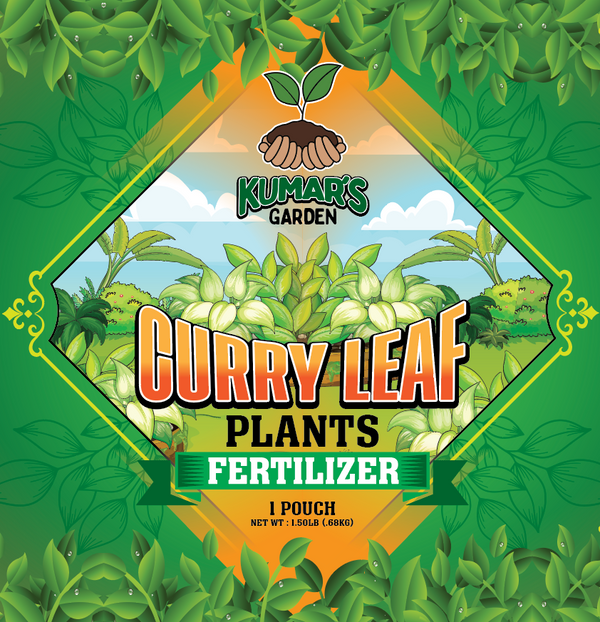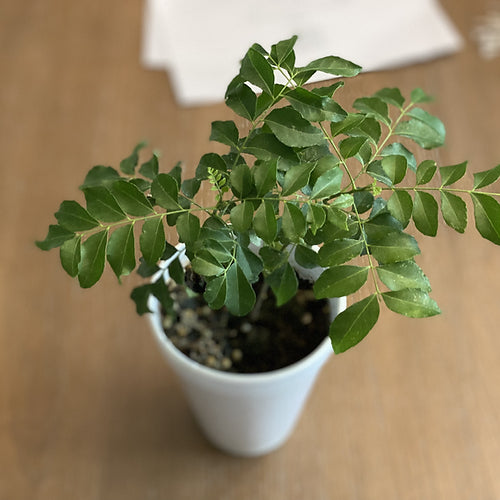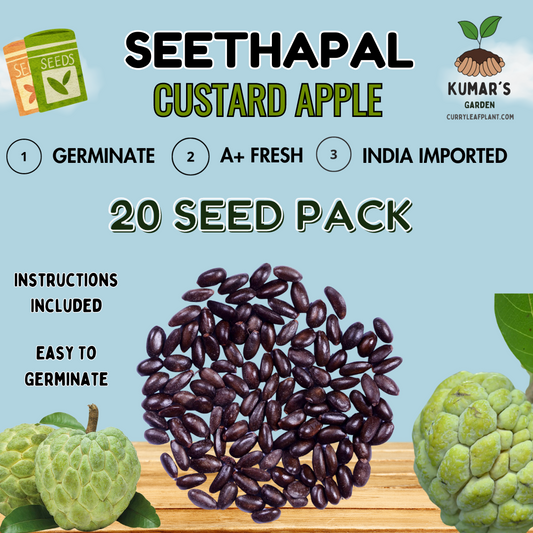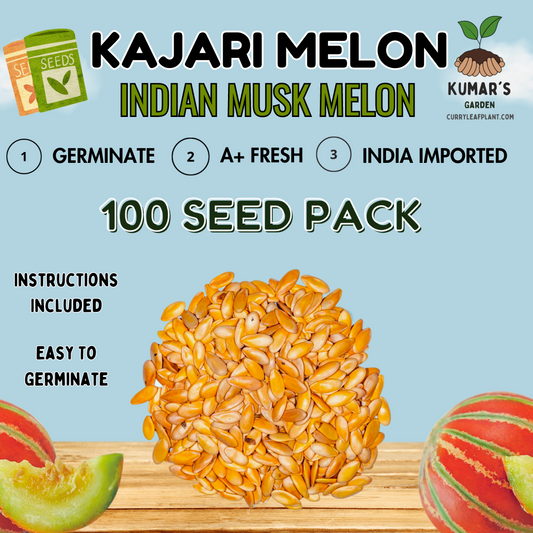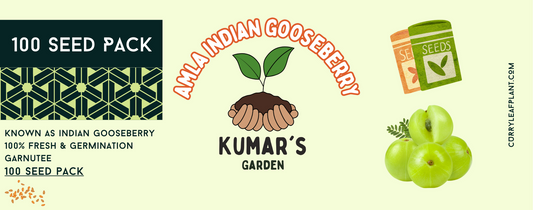Neem and Curry Leaf Plant are two distinct plants with unique characteristics and uses. Understanding the differences between them is essential for gardeners who want to cultivate these plants. In this article, we will explore the origins, growth, culinary and medicinal uses, as well as caring techniques for Neem and Curry Leaf Plant.
Key Takeaways
- Neem and Curry Leaf Plant have different natural habitats and growth characteristics.
- Both Neem and Curry Leaf Plant are used in culinary dishes, but their flavors and applications vary significantly.
- Neem is known for its medicinal properties and is used in traditional medicine, while Curry Leaf Plant is valued for its aromatic and medicinal properties.
- Neem requires well-drained soil and moderate watering, while Curry Leaf Plant thrives in rich, well-drained soil and regular watering.
- Pruning and maintenance practices differ for Neem and Curry Leaf Plant, and it is important to understand the specific care requirements for each plant.
Neem vs. Curry Leaf Plant: Origins and Growth
Natural Habitat of Neem
The neem tree, known scientifically as Azadirachta indica, is indigenous to the Indian subcontinent. It thrives in tropical and semi-tropical regions where it has been a part of the natural ecosystem for centuries. Neem trees are remarkably resilient and can adapt to a wide range of environmental conditions, although they prefer areas with well-drained soil and at least 400-1200 mm of annual rainfall.
Neem trees are often found in mixed deciduous forests, as well as in coastal and riparian areas, where their deep root systems help them access water during dry periods.
Typically, neem trees grow in the following environmental conditions:
- Temperature: They can tolerate high temperatures but are sensitive to frost.
- Altitude: Neem trees can grow at altitudes up to 1500 meters.
- Soil Type: They are not particular about soil type, though they grow best in black cotton soil and deep, well-draining sandy soils.
Natural Habitat of Curry Leaf Plant
The Curry Leaf Plant, known scientifically as Murraya koenigii, thrives in the subtropical and tropical regions of India and other parts of Asia. It is a staple in the gardens of many homes where the climate is warm and humid, often found growing in the wild as well.
The plant prefers full sun to partial shade and can often be seen flourishing along the edges of forests and in hilly areas.
The Curry Leaf Plant is highly valued for its aromatic foliage which is a key ingredient in many South Asian cuisines.
While it is robust and can adapt to various soil types, the Curry Leaf Plant does best in well-drained soils. It is less tolerant of cold temperatures and requires protection from frost, which can severely damage or kill the plant.
Growth Characteristics of Neem
The Neem tree, known scientifically as Azadirachta indica, is renowned for its robust growth and adaptability to various environmental conditions. Neem trees can reach heights of up to 15 to 20 meters and possess a broad, dense crown that provides ample shade. The longevity of these trees is notable, with some living for over 200 years.
- Neem trees thrive in tropical and subtropical climates.
- They prefer well-drained soils and are highly drought-resistant.
- The growth rate of Neem is relatively fast, making it a popular choice for reforestation projects.
Neem's ability to withstand extreme conditions makes it an excellent choice for gardeners looking to incorporate a hardy and beneficial tree into their landscape. Its deep root system helps in stabilizing the soil and can be advantageous in preventing erosion.
Growth Characteristics of Curry Leaf Plant
The Curry Leaf Plant, known scientifically as Murraya koenigii, is a tropical to subtropical tree that is highly valued for its aromatic foliage. It thrives in warm climates and is often grown as a potted plant in cooler regions.
- Hardy in USDA zones 9-12, it can reach up to 6 meters in height in optimal conditions.
- Prefers full sun to partial shade.
- Features pinnate leaves that are used in a variety of culinary dishes.
The Curry Leaf Plant is relatively low-maintenance but requires regular harvesting to promote bushier growth and prevent legginess. This practice not only maintains an aesthetically pleasing shape but also ensures a steady supply of fresh leaves for cooking.
Culinary and Medicinal Uses
Culinary Uses of Neem
Neem leaves are renowned for their bitter flavor, which is often an acquired taste. They are commonly used in small quantities to impart a unique taste to dishes, particularly in South Asian cuisine.
- Neem leaves can be used fresh, dried, or in powdered form.
- They are often used in pickles, chutneys, and as a seasoning in rice dishes.
- Neem oil, extracted from the seeds, is sometimes used for its distinctive flavor in certain recipes, though it is not as commonly used as the leaves due to its strong taste and aroma.
While not a staple for everyday cooking, neem leaves are occasionally used in festive and traditional dishes, adding a layer of complexity to the flavor profile.
Culinary Uses of Curry Leaf Plant
The Curry Leaf Plant, known scientifically as Murraya koenigii, is a staple in Indian and Sri Lankan cuisines. Its aromatic leaves are used to flavor a variety of dishes, imparting a unique and pungent taste that is both refreshing and slightly bitter.
The leaves are often used in curries, dals, and soups, and are typically fried in oil to release their full flavor before being added to the dish.
- Fresh leaves are most commonly used, but they can also be dried for long-term storage.
- They are an essential ingredient in spice blends such as Madras curry powder.
- The leaves are also used for garnishing, adding a touch of elegance and flavor to finished dishes.
The versatility of curry leaves makes them an indispensable herb in South Asian cooking, and their presence can elevate a dish from ordinary to extraordinary.
Medicinal Properties of Neem
Neem has been revered for its medicinal properties for centuries. The tree's leaves, bark, and seeds are commonly used in traditional medicine across various cultures. Neem is particularly known for its antibacterial, antifungal, and anti-inflammatory properties, making it a valuable plant in the treatment of numerous ailments.
- Antibacterial: Effective against certain bacteria that cause infections.
- Antifungal: Used to treat skin conditions like ringworm and athlete's foot.
- Antiviral: May help in managing viral infections.
- Anti-inflammatory: Can reduce inflammation and pain in conditions like arthritis.
- Antioxidant: Helps in protecting cells from damage by free radicals.
Neem's versatility in treating health issues extends to its use as a dental care product. Its twigs are often used as natural toothbrushes, and its extracts are found in many oral health products due to their ability to fight plaque and gingivitis.
Medicinal Properties of Curry Leaf Plant
The Curry Leaf Plant, known scientifically as Murraya koenigii, is not just a staple in flavoring dishes but also a reservoir of medicinal properties. The leaves are rich in antioxidants and have been traditionally used to promote digestive health.
- Antioxidants: Curry leaves contain various antioxidants which help in protecting the body from oxidative stress.
- Digestive Health: They are known to aid in digestion and can alleviate issues such as upset stomach, excessive acid secretion, and indigestion.
- Diabetes Management: Compounds in curry leaves have been found to help in controlling blood sugar levels.
- Hair and Skin: Applying curry leaf paste on skin and hair is believed to improve their health and vitality.
The use of curry leaves extends beyond culinary applications, offering a natural remedy for a range of health concerns. Their inclusion in daily diet can contribute to overall well-being.
Caring for Neem and Curry Leaf Plant
Soil and Water Requirements for Neem
Neem trees thrive in a variety of soil types but prefer well-drained sandy or loamy soils. They are quite tolerant of poor soils and can even grow in slightly acidic to neutral pH levels. Proper drainage is crucial to prevent root rot, which can be fatal to the plant.
- Soil type: Sandy to loamy
- Soil pH: Slightly acidic to neutral (pH 6.0 - 7.5)
- Drainage: Well-drained
When it comes to watering, neem trees require moderate watering, especially during the dry season. Over-watering should be avoided as it can lead to issues such as root rot. Young trees need more frequent watering until they are well-established.
Neem trees are drought-resistant once established, making them suitable for arid climates where water conservation is essential.
Soil and Water Requirements for Curry Leaf Plant
The Curry Leaf Plant (Murraya koenigii) thrives in well-draining, fertile soil with a neutral to slightly acidic pH. Regular watering is crucial, especially during the plant's growing season, to keep the soil consistently moist but not waterlogged.
- Soil Type: Loamy or sandy soil that is rich in organic matter.
- pH Level: 6.0 to 7.0 (neutral to slightly acidic).
- Watering: Consistent moisture is needed, with reduced watering in the winter.
It's important to ensure that the Curry Leaf Plant is not left in standing water to prevent root rot, which can be detrimental to the plant's health.
During hot, dry periods, mulching can help retain soil moisture and regulate soil temperature, contributing to the overall well-being of the Curry Leaf Plant. Adequate drainage is essential to avoid diseases, and the use of organic compost can enhance soil fertility and structure.
Pruning and Maintenance of Neem
Pruning neem trees is essential for maintaining their health and promoting better growth. It's typically done during the monsoon season when the tree is not actively flowering or fruiting.
- Remove dead or diseased branches to prevent the spread of infection.
- Trim branches that cross each other to ensure good air circulation.
- Cut back any overgrowth to maintain the desired shape and size of the tree.
Regular pruning also encourages the neem tree to produce more leaves, which are valuable for their medicinal properties. It's important not to over-prune, as this can stress the tree and reduce its vigor.
Pruning and Maintenance of Curry Leaf Plant
Proper pruning and maintenance are crucial for the health and productivity of a Curry Leaf Plant. Regular trimming encourages bushier growth, which can lead to a more abundant harvest of leaves. It's important to remove any dry or dead leaves and branches to prevent disease and pest infestations.
- Begin by removing dead or yellowing leaves.
- Cut back any overgrown branches to maintain shape.
- Prune in the early spring to stimulate new growth.
Fertilize the Curry Leaf Plant after pruning to replenish nutrients and promote healthy new foliage.
Avoid heavy pruning during the plant's dormant period in winter. Instead, focus on light maintenance to keep the plant tidy without inhibiting its natural growth cycle.
Conclusion
In conclusion, understanding the distinctions between neem and curry leaf plants is essential for gardeners. While both plants have their unique characteristics and uses, it is important to recognize the differences in appearance, growth habits, and medicinal properties. By gaining a deeper understanding of these distinctions, gardeners can make informed decisions about cultivating and utilizing these beneficial plants in their gardens.
Frequently Asked Questions
What is the difference between neem and curry leaf plant?
What are the natural habitats of neem and curry leaf plant?
- Neem: Neem is native to the Indian subcontinent and thrives in tropical and subtropical regions. It is commonly found in India, Sri Lanka, Pakistan, and other countries in South Asia.
- Curry Leaf: Curry leaf is native to South Asia and is found in countries like India, Sri Lanka, and Malaysia. It also grows in tropical and subtropical regions.
What are the medicinal properties of neem and curry leaf plant?
- Neem: Neem is not typically used in culinary preparations due to its bitter taste.
- Curry Leaf: Curry leaves are widely used in Indian cooking to add flavor and aroma to various dishes, especially in South Indian cuisine.
What are the soil and water requirements for neem and curry leaf plant?
- Neem: Neem has various medicinal properties, including antibacterial, antifungal, and anti-inflammatory effects. It is used in traditional medicine for treating skin conditions, diabetes, and more.
- Curry Leaf: Curry leaves are rich in antioxidants and have potential health benefits, such as aiding digestion and managing diabetes. They are also used for their medicinal properties in traditional remedies.
How do I prune and maintain neem and curry leaf plant?
- Neem: Neem trees can be pruned to shape and remove dead branches. Regular watering and occasional fertilization help in their growth.
- Curry Leaf: Curry leaf plants can be pruned to maintain shape and promote bushiness. They benefit from regular pruning and feeding with balanced fertilizer.



